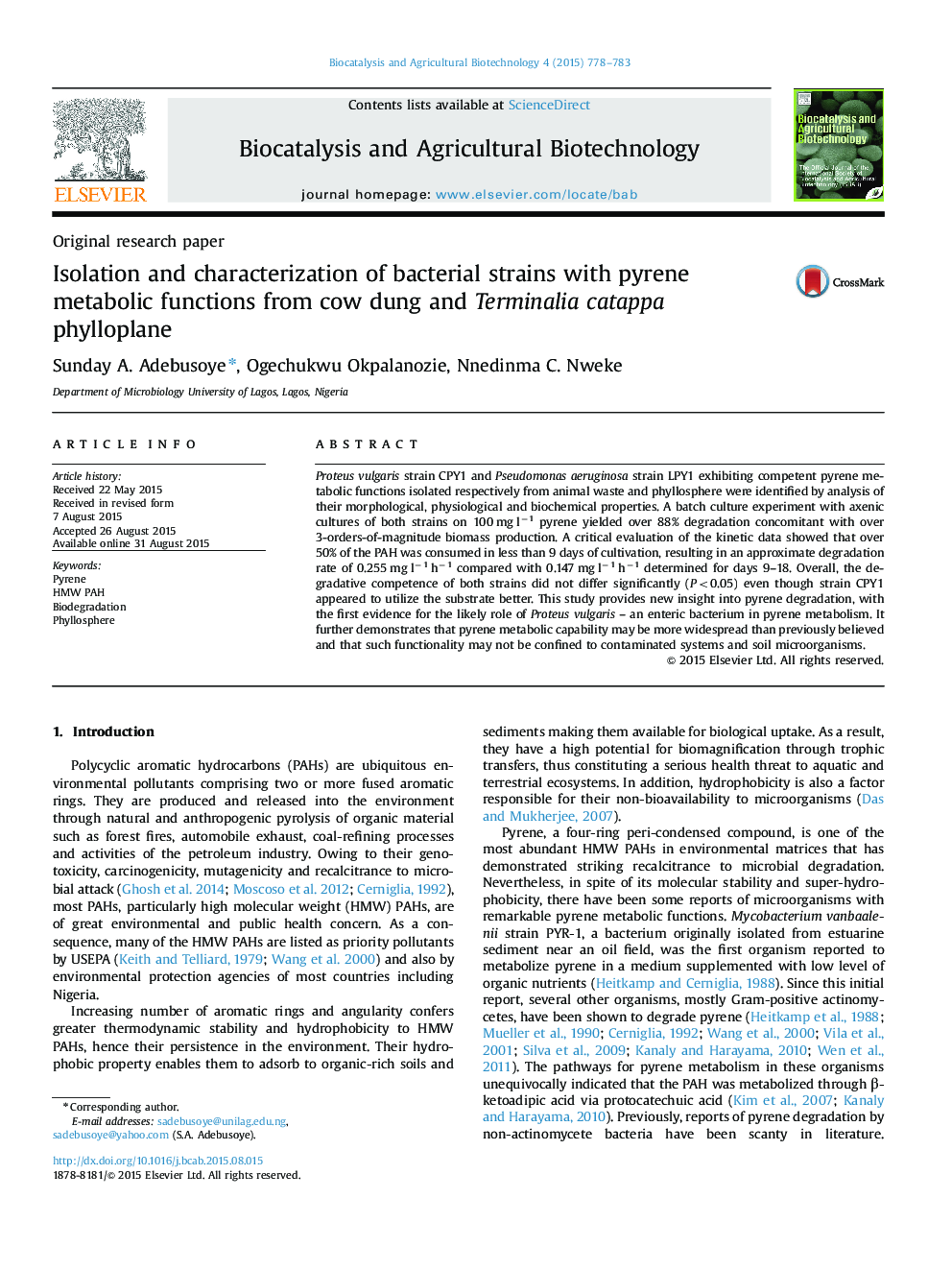| Article ID | Journal | Published Year | Pages | File Type |
|---|---|---|---|---|
| 2075337 | Biocatalysis and Agricultural Biotechnology | 2015 | 6 Pages |
Proteus vulgaris strain CPY1 and Pseudomonas aeruginosa strain LPY1 exhibiting competent pyrene metabolic functions isolated respectively from animal waste and phyllosphere were identified by analysis of their morphological, physiological and biochemical properties. A batch culture experiment with axenic cultures of both strains on 100 mg l−1 pyrene yielded over 88% degradation concomitant with over 3-orders-of-magnitude biomass production. A critical evaluation of the kinetic data showed that over 50% of the PAH was consumed in less than 9 days of cultivation, resulting in an approximate degradation rate of 0.255 mg l−1 h−1 compared with 0.147 mg l−1 h−1 determined for days 9–18. Overall, the degradative competence of both strains did not differ significantly (P<0.05) even though strain CPY1 appeared to utilize the substrate better. This study provides new insight into pyrene degradation, with the first evidence for the likely role of Proteus vulgaris – an enteric bacterium in pyrene metabolism. It further demonstrates that pyrene metabolic capability may be more widespread than previously believed and that such functionality may not be confined to contaminated systems and soil microorganisms.
